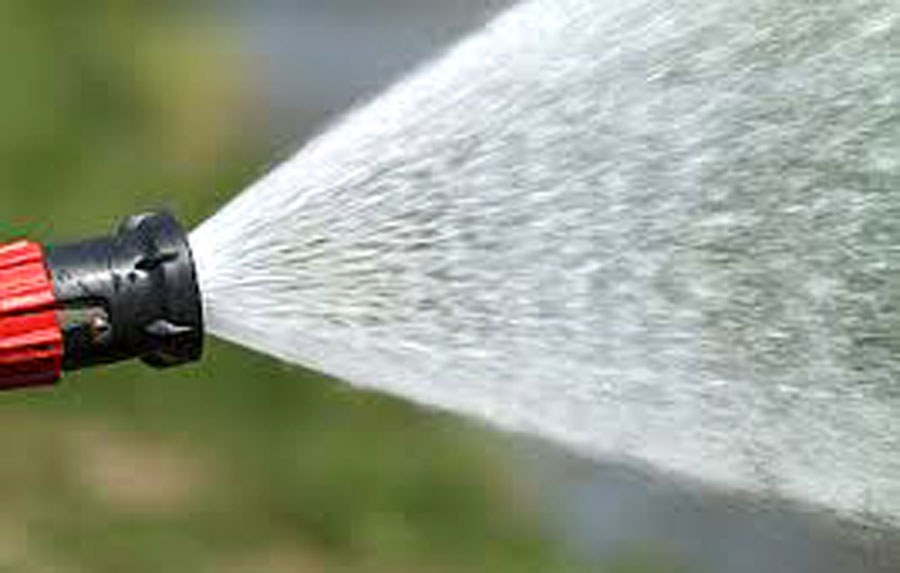WELLINGTON COUNTY – It’s been a dry spring and the Grand River Conservation Authority is asking water users in the watershed to cut consumption by 10 per cent.
Gardeners might be asking how they can do that and still keep their plants alive.
Barb McKean, head of education at the Royal Botanical Gardens in Hamilton, said with climate change upon us, it’s time for gardeners to take stock and re-examine their gardening practices.
“I see people out every night spraying their garden,” she said in an interview. “We can all help by using less of it. We can still have beautiful plants, but many things we’ve done as gardeners are going out of vogue. We need a paradigm shift.”
Saving water in the garden begins by choosing plants that are drought tolerant, by properly preparing the soil so it can absorb water and not just run off, and by watering so it reaches the roots – where it’s useful to the plant.
Wetting the leaves does nothing for the health of the plant, McKean said, and can actually produce fungus and mildew that harm a plant.
In her own garden, McKean said she’ll plant a few annuals in containers close to her patio, where she can keep an eye on them and water as needed.
“But I will not put annuals in the garden,” she said. “They take lots of water and have shallow roots. But perennials in the garden have deep roots and can tolerate some drought.
“They conserve water themselves. They’ll droop a bit but don’t need to be watered unless they are wilting.”
Perennials only need regular watering the first year or two after planting. Then they’re usually strong enough to withstand dry conditions.
McKean said the Royal Botanical Gardens planted a new rose garden in 2018 with 3,300 bushes that are pretty hardy.
She said they installed a drip irrigation system for the roses with the idea that they’d stop using it in five years.
“People think roses need a lot of water but they don’t. They’re pretty tough,” she said.
Choosing native plants can also reduce water use as they usually have deep root systems and are drought tolerant as well.
She listed echinacea, coneflowers, ornamental grasses and woodland sunflowers as good, drought tolerant native plants that can usually get by on rainfall as their sole water source.
And having a mix of plants has the added benefit of helping support biodiversity, she said.
Established lawns generally don’t need to be watered either. While your lawn will turn brown when dry, the grass is not dying, she said, but rather has gone dormant.
The thing with lawns is to stop mowing when the grass is dry. And it doesn’t take much rainfall for the lawn to green up again.
What people often forget about is trees.
“Watering trees is important,” she said. “Water at the root and around the drip line – that’s where the moisture is needed.”
If you water your garden with a garden hose, try to get the soil at the base of the plant and not the leaves. And give a good amount of time before moving on to the next plant, so the water can seep into the ground.
Watering in the morning or evening is better than mid-day as much of the water will be lost to evaporation.
And water on leaves can magnify the sun and burn the leaves.
Even better than watering with a garden hose is using rain barrels and best is connecting the rain barrel to a drip irrigation system.
Then you’re using free water and it’s targeted at the roots.
“It takes some set up, but it will save time and it’s so easy. There’s no evaporation and it uses minimal water,” McKean said. “With overhead sprinklers, 50% of the water is lost to evaporation.”
Adding compost to the soil not only feeds the plant but helps absorbs water.
McKean said it’s good practice to rake leaves on your gardens in the fall. That will decompose over the winter, feed your plants, “and the microscopic life can be thriving.”
When it comes to vegetable gardens, it’s important to be consistent with watering, she said. Vegetables need about an inch of water a week, but that’s better when spread over two or three waterings than in a single dousing.
Rain gauges are inexpensive and extremely helpful in knowing how much you’ve watered.
“It’s a basic tool that people need. It’s so much easier to know than to guess,” she said.
If there’s a light rain, that can also be a good time to water.
The rainfall isn’t enough, but with the soil surface wet, your watering will get to the root easier and require less time and effort on your part.
Gardeners can also keep a watering can near the kitchen sink. For times when the tap is running to heat or cool your tap water, collect that water rather than let it run down the drain.
Final point – mulch. Mulch in the garden will slow evaporation and help the soil retain moisture, thus reducing the need to water. And bonus, it also reduces weeds.
Just make sure you don’t use wood mulch if you’re in a termite zone.
“There’s so much the individual gardener can do to make a huge difference,” McKean said. “It doesn’t take enormous investments and has a big impact.”




